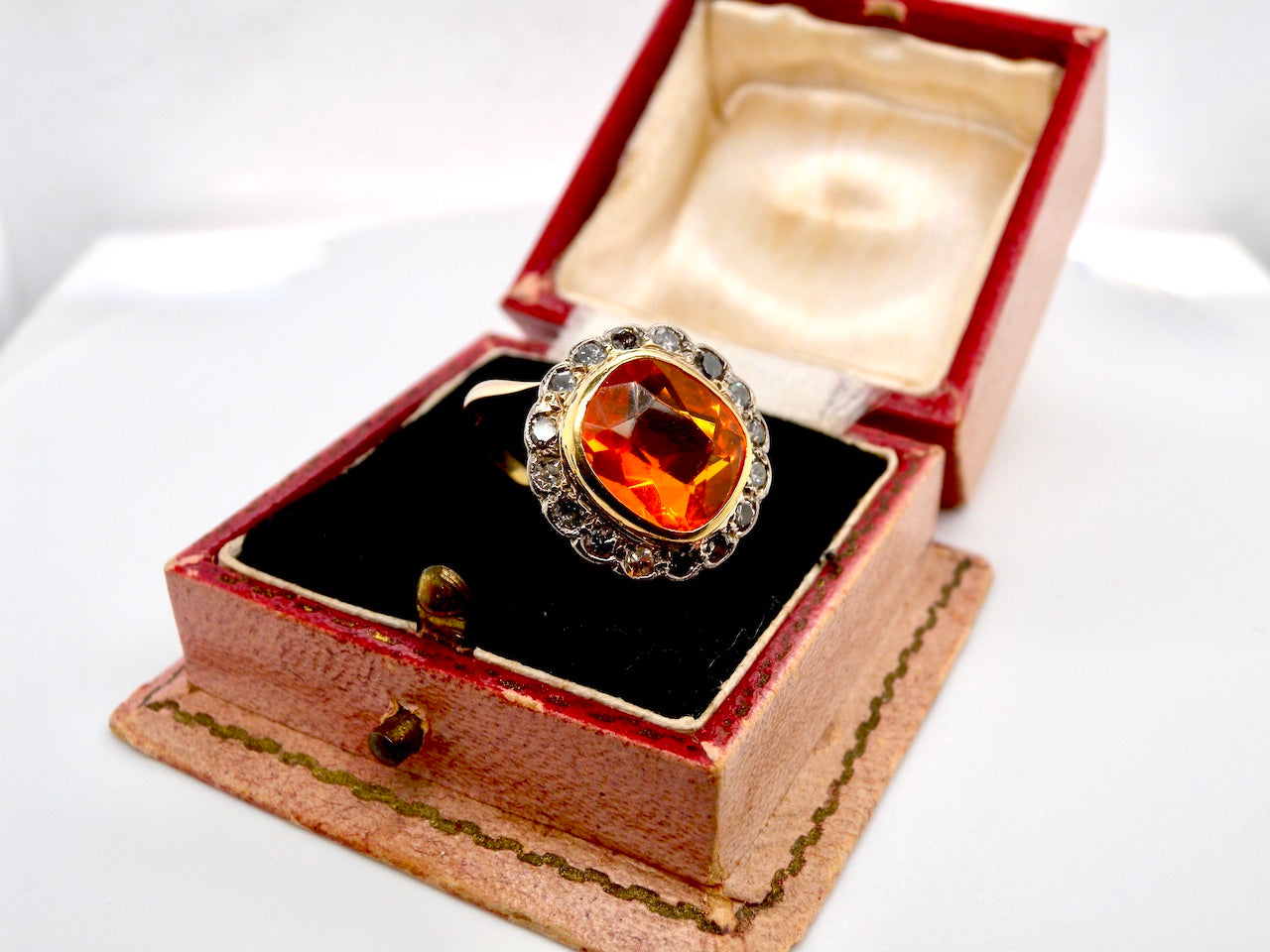The first peridot that really stopped me was a Victorian pendant with a soft, olive-green glow. It didn’t blaze like a diamond; it breathed. Under warm light the colour deepened, and the tiny seed pearls around it made the green look richer still. The customer who bought it later told us she wore it more than anything else she owned because it “looked friendly.” That’s peridot all over approachable, lively, and surprisingly versatile.
Peridot is the gem variety of olivine. Its colour is baked into the crystal itself, so you’re looking at a natural green rather than something coaxed out by heat or treatment. What changes from stone to stone is the balance of tone and saturation: some peridots lean grassy and bright; others head towards olive with a little gold in the mix. On the hand, those differences matter more than you’d think.
What collectors look for (the quick read)
• Colour: An even, fresh green with enough depth to hold its own in daylight. Too brownish or too yellow and it can look tired.
• Clarity: Peridot often shows tiny “lily-pad” inclusions (disk-like features) charming under a loupe but less so if they break the surface or gather under the table. GIA
• Cut: Ovals and cushions flatter the colour; step cuts can look wonderfully crisp if the stone is clean.
• Size: Larger, clean peridots are less common and feel luxurious without the price leap you see in many other gems.
• Setting: Yellow gold warms the stone; white metals can make the green look a touch cooler and sharper.
A short history on the wrist and at the neck
Peridot has been loved for a very long time. Egyptian sources on Zabargad (St John’s) Island were famous in earlier centuries, and Victorian jewellers adored the stone for its friendly colour and the way it sits with pearls. In Edwardian pieces, you’ll sometimes see peridot set in platinum for a cooler, silvery mood. By the 1920s and 30s, step-cut peridots found their way into bold, geometric designs where the clean facets suited the architecture of Art Deco. (For a quick primer on peridot’s classic sources and its “lily-pad” inclusions, Gem-A’s birthstone guide is a solid reference.) gem-a.com
How peridot feels in different metals
• Yellow gold adds warmth and emphasises the olive notes very flattering on most skin tones and a natural fit for Victorian styles.
• White gold / platinum cool the colour slightly and make crisp step cuts look extra tidy great for Deco-inspired settings.
• Two-tone mounts can balance things: yellow around the stone for glow, white on the shank for a clean, modern line.
If you’re torn, try the same stone in different mount colours. People are often surprised by how much the metal shifts the mood.
Bench notes: what we check before a piece goes out
• Table & facet wear: Peridot sits around 6½–7 on the Mohs scale, so old rings sometimes show faint facet rounding or tiny edge nibbles. We’ll point these out and advise if a light polish is wise. (This hardness and the “wear with some care” message match GIA guidance.) GIA+1
• Inclusions: A few internal “lily pads” are normal; crowds of them, or any reaching the surface in high-wear areas, can be a sign to choose another stone. GIA
• Seat & claws: Older bead-set and millegrain edges can be beautiful but deserve a close look. We tighten where needed and keep the period line intact.
• Shank & sizing: If a ring needs reinforcing before sizing, we’d rather do it once, properly, so you can wear it every day without worry.
Wearing peridot day to day
Peridot is durable enough for jewellery but appreciates a bit of kindness. We suggest removing rings for the gym or heavy DIY, and being gentle with knitwear if the claws are fine. Cleaning is simple: warm water, a drop of mild soap, soft brush, rinse, pat dry. Avoid ultrasonic and steam cleaners peridot doesn’t like sudden heat changes and can be vulnerable to thermal shock. (That’s straight from GIA’s care guidance.) GIA+1
If you’re a pendant-or-earring person, peridot is easy it lives further from the knocks of daily life and looks gorgeous near the face, especially in yellow gold.
How to choose: a jeweller’s checklist
1.Look at the stone in varied light. Daylight shows the true hue; warm indoor light brings out the gold.
2. Tilt and watch the colour hold. Good stones keep their green when you roll them; weaker ones “wash out” at angles.
3. Check the centre first. If inclusions sit right under the table and catch the eye, you may notice them forever. If they’re tucked away, they’ll bother you less. GIA
4. Judge face-up size, not weight. A well-cut 3ct can look larger than a sleepy 4ct.
5. Try metal colours on your skin. The right metal often “chooses” you.
6. Ask about past work. A tidy re-tip is fine; over-polished edges are not.

Styles through the eras (what we see most)
• Victorian: Peridot with seed pearls, hearts, foliate motifs, and rich yellow gold — soft and romantic.
• Edwardian: Fine platinum latticework, diamond accents around step-cut greens — airy and elegant.
• Art Deco: Bold geometry, crisp facets, and sometimes calibré-cut gems alongside peridot for contrast.
• Mid-century: Clean shoulders, simple baskets, and peridots that let the colour do the talking.
FAQs (shop-floor answers)
Is peridot treated?
Generally no peridot is usually not routinely treated; you’re seeing the natural colour of the crystal. (That natural-colour point aligns with standard gemology references; our care and clarity pointers above are GIA-supported.) GIA
Why do some peridots look “olive” and others bright green?
Small shifts in iron content and the way the stone is cut can push a stone warmer or cooler. Try a few side by side; your eye will pick a favourite quickly.
Does peridot work for engagement rings?
It can, if you like colour and you’re happy to give it sensible care. A protective setting (bezel or strong claws) and a quick yearly check keep it looking its best. For hard daily wear, pendants and earrings are the easy win.
What are those round, disc-like marks I see under a loupe?
They’re the classic “lily-pad” inclusions common in peridot and useful as an ID clue. A few are fine; we just avoid stones where they’re obvious under the table. GIA
 Final thoughts
Final thoughts
Our stock of fine vintage and antique Peridot jewellery changes daily so please check back often.
You May Also Like: Tips and Care For Vintage Jewellery






